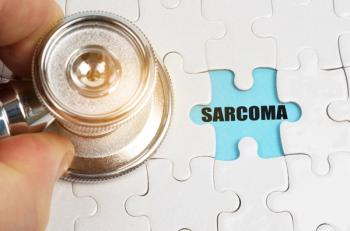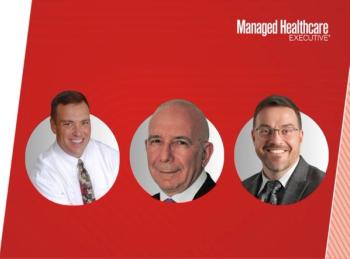
New initiatives arise out of NECC compounding tragedy
The human toll of the New England Compounding Center (NECC) tragedy continues to grow as the death count is at 50 and the number of patients sickened now exceeds 722. These cases have been reported, and are being tracked by the Centers for Disease Control (CDC) in 20 states. The impact that this sequence of events has had, is having, and will continue to have on the practice of pharmacy nationwide is of unprecedented magnitude and is of the utmost concern to practicing pharmacists everywhere.
T
he human toll of the New England Compounding Center (NECC) tragedy continues to grow as the death count is at 50 and the number of patients sickened now exceeds 722. These cases have been reported, and are being tracked by the Centers for Disease Control (CDC) in 20 states. The impact that this sequence of events has had, is having, and will continue to have on the practice of pharmacy nationwide is of unprecedented magnitude and is of the utmost concern to practicing pharmacists everywhere.
A February 6, 2013, Boston Globe article (“Specialty drug labs in Mass. fail safety inspection” by Kay Lazar and Chelsea Conaboy), represented a situation update of sorts, noting that only 4 of 37 inspected pharmacies had passed the surprise inspections conducted by the Massachusetts Department of Public Health in conjunction with the Board of Registration in Pharmacy. Pharmacists across the commonwealth, and not consumers, reacted by pointing out that the information in the article is exactly why we need a new, agreed-upon set of definitions. Compounding pharmacies, specialty pharmacies, and labs are 3 uniquely different entities; that distinction is clear in the minds of all healthcare providers. Ironically, “clarifying the definitions” was the first goal in the report of the Special Commission on the Oversight of Compounding Pharmacies, a group created by Massachusetts Governor Deval Patrick and charged to submit their recommendations by December 31, 2012.
Also, on February 6, the Pharmacy Sterile Compounding Summit was held in Washington, D.C. This event was sponsored and supported by The PEW Charitable Trusts, the American Society of Health Systems Pharmacists, and the American Hospital Association. The formal presentations and the roundtable dialogues were remarkably on point and reflective that substantial conversations have been ongoing, outside the scope of this meeting. One example was that of definitions and another example was that of the jurisdictional challenges where state versus federal oversight is in question.
Broad topic areas covered included the scope and risk factors of sterile compounding as we know it today, sterile production quality standards with a focus on the USP Chapter 797, and oversight by federal and state agencies including jurisdictional challenges.
A strategic cross section of invited groups and organizations attended. This included FDA, the healthcare group purchasing industry, National Community Pharmacists Association, Institute for Safe Medication Practices, CDC, American Medical Association, United States Pharmacopeia, wholesaler industry, pharmaceutical compounding industry, American Pharmacists Association, Children’s Hospital Association, and National Association of Boards of Pharmacy. Also in attendance were several industry expert consultants, several pharmacy leaders at academic and rural hospital settings, and 1 academic representative. The Massachusetts Society of Health System Pharmacists gave an opening keynote address.
Pharmacy themes
Several pharmacy themes surfaced throughout the day and appeared to be well understood by most of the attendees:
â “Compounds” made in the hospital setting always tie to a patient-specific order.
â There is a need to settle jurisdictional delineations as we compare “small-scale” and “large-scale” compounding pharmacies. Large scale implies “manufacturing” and suggests FDA oversight.
â Hospitals operate under Joint Commission and Centers for Medicare & Medicaid Services accreditation and therefore implement many medication use programs and safeguards including antimicrobial stewardship, pharmacy and therapeutics committees, formularies, quality improvement, and risk-management committees.
â Evidence-based, industry-endorsed, standardized assessment process tools with statistically validated scoring/weighting methodology are essential and must be specific to the setting under review, with respect to sterile and non-sterile compounding.
â There is widespread and growing concern over existing accreditation processes and bodies, not only over products like the pharmaceuticals but also over services like air testing and media fill vendors.
Also, of special interest to practicing pharmacists is the controversy swirling around the composition of the state boards of pharmacy, relevant to the number of pharmacists. In Massachusetts, the Special Commission on the Oversight of Compounding Pharmacies recommended having 6 pharmacists on the 11-member board compared to 7 today. The governor filed legislation on January 4, 2013, proposing the pharmacist number be reduced to 4. Each state Board of Registration in Pharmacy operates with 6 to 8 members, of which all but 1 are pharmacists, with at least 1 consumer participant.
Many argue that the head count is irrelevant as much as the collective expertise, or years of experience, is the critical success factor. In that vein, the Massachusetts Special Commission also recommended that advisory groups be formed and utilized, noting the breadth of pharmacy practice areas in play today in the United States. That list includes home infusion, long-term care, nuclear, community independent, retail chain, hospital, sterile compounding, nonsterile compounding, larger-scale manufacturing, specialty, managed care, and others.
What is lost in the tornado of legislation, meetings, regulation changes, and the general professional and media noise is that the NECC tragedy, as horrible as it was, is very atypical of the way that pharmacies operate and pharmacists practice. The American Society of Health System Pharmacists website (www.ashp.org) highlights the powerful and innovative clinical pharmacy programs implemented at so many hospitals across the United States. Much of this is categorized under the Pharmacy Practice Model Initiative and there are highlighted health systems in the practice spotlight section.
As has been stated in so many venues when this topic is being discussed, we all hope that cooler heads prevail as new and better practices and oversight methods are planned, developed, and implemented across the country. â
Dr Kerr is chief pharmacy officer, Baystate Health, Springfield, Mass., and president, Massachusetts Society of Health-System Pharmacists.
The author reports that he serves as a consultant on the CVS-Caremark National Pharmacy and Therapeutics Committee.
Newsletter
Get the latest industry news, event updates, and more from Managed healthcare Executive.

















































